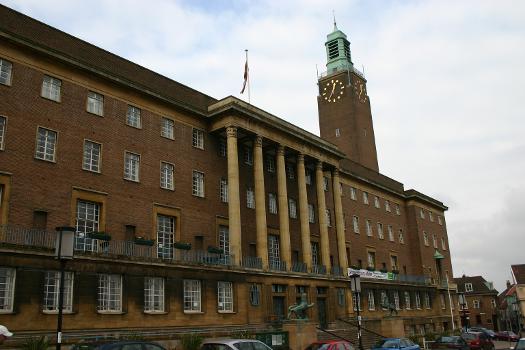General Information
| Name in local language: | Norwich City Hall |
|---|---|
| Completion: | 1938 |
| Status: | in Nutzung |
Project Type
Location
| Location: |
Norwich, Norfolk, East of England, England, Großbritannien |
|---|---|
| Address: | St. Peter's Street |
| Coordinates: | 52° 37' 43.25" N 1° 17' 29.89" E |
Technical Information
Dimensions
| Turm | Höhe | 62.8 m |
Participants
Architektur
- Charles Holloway James (Architekt)
- Stephen Rowland Pierce (Architekt)
Relevant Web Sites
There currently are no relevant websites listed.
- About this
data sheet - Structure-ID
20043631 - Published on:
17/02/2009 - Last updated on:
28/07/2017




